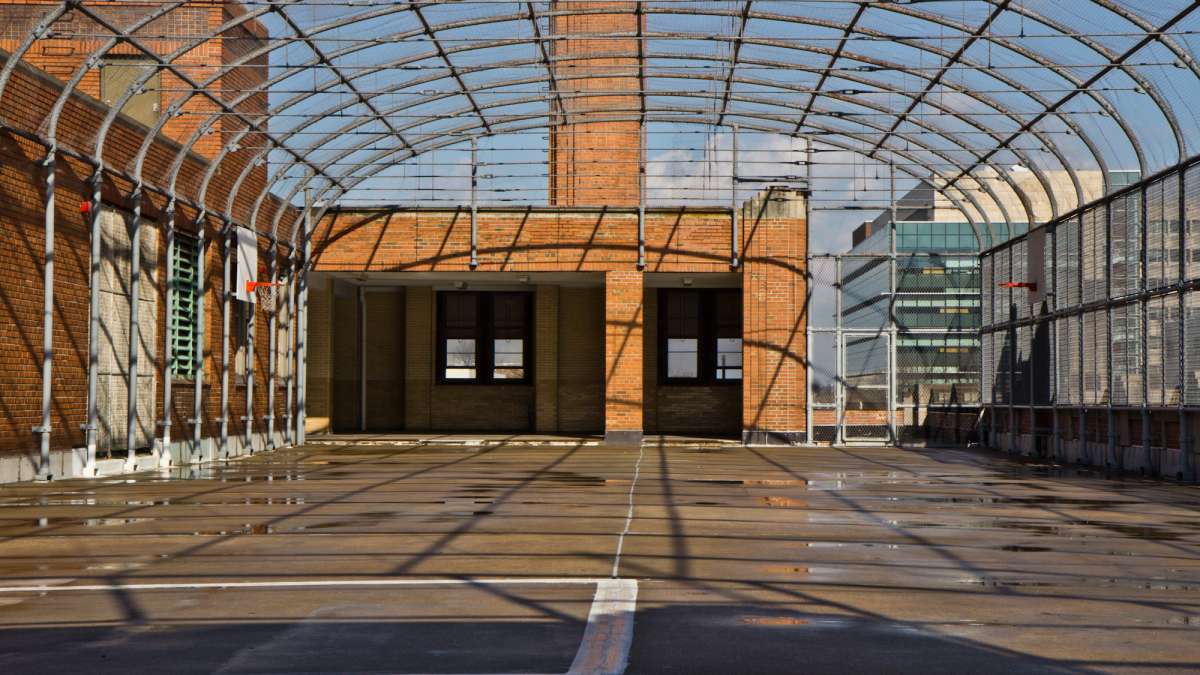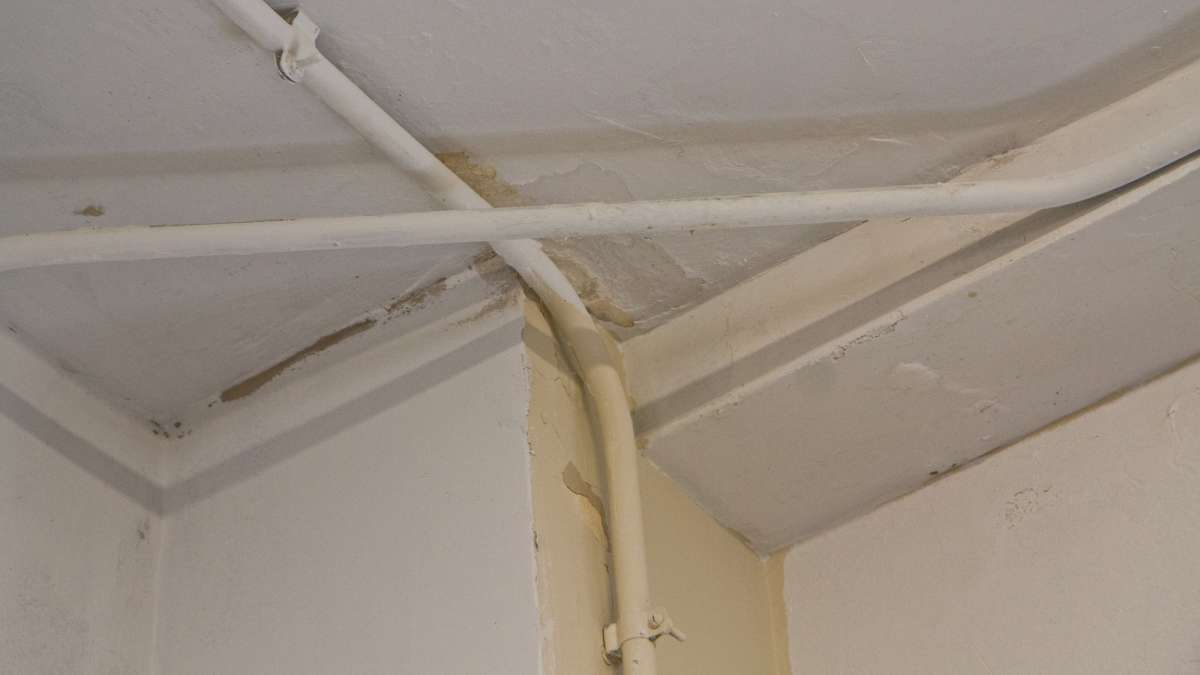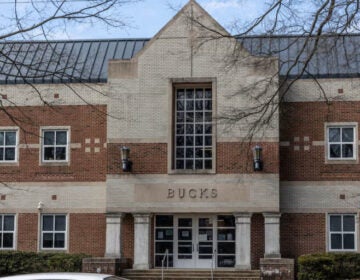Report: Philly needs billions to rehab sagging schools
A rare look into the state of Philadelphia’s public school buildings reveals billions in need repairs, with even bigger bills yet to come.
Nestled among the gleaming towers of Temple University sits Paul Lawrence Dunbar Elementary School, built in 1931 and looking every bit its age.
On rainy days, the school’s roof–which is out of date and poorly pitched–becomes a repository for large pools of water. And sometimes those pools of water become a big problem for the students below.
“Quite often we have to move the class because this water seeps down into the classrooms, through the ceiling tiles, onto the floor, and there’s children in there with big buckets,” said Dunbar principal Dawn Moore.
Dunbar is one of the lucky schools. It will be getting a replacement roof within the year.
But there’s a big backlog of projects similar to this one the district can’t afford to complete. In fact, there are more than 12,000 of them.
A new report commissioned by the district and released Thursday shows just how expensive that backlog has become, and how much pricier it could get if Philadelphia doesn’t commit more money to capital projects.
Right now, the district has $4.5 billion in deferred maintenance, according to the just-completed Facilities Condition Assessment (FCA). In the next ten years, the report says, Philadelphia schools will accumulate another $3.2 billion in needed repairs.
It will come as news to almost no one that a cash-strapped school district with buildings over a century old has significant facilities needs. The FCA, however, offers a rare look into how significant those needs are. It’s been almost 15 years since the district completed an analysis like this–and back then the results weren’t made public, said Capital Projects director Danielle Floyd.
The FCA will help district officials prioritize which projects to tackle with the money they have. This fiscal year the district plans to spend about $172 million on capital needs. It would need to spend roughly quadruple that amount for 10 consecutive years to fill its massive facilities deficit.
In other words, the district feels it needs a lot more money, and it believe the FCA can also become a tool for rallying support and convincing lawmakers to fork over that cash.
“We are not going to shy away from being active and being out front about we need in the School District of Philadelphia,” said Floyd, adding that the costs accounted for the FCA aren’t for luxury items such as “natatoriums” (indoor swimming pools).
The district, says Floyd, is seeking capital investments that meet the “basic rights for children.”
Because the district cannot raise its own tax revenue, it must lobby city and state lawmakers for increased funding. So, the FCA will become a major talking point in future pitches.
At the moment, in fact, state lawmakers are reviewing PlanCon, Harrisburg’s system of reimbursing school districts for capital projects. The state used to release $300 million each year, but the line item was recently cut and replaced with a bond meant to fulfill some portion of the outstanding requests. Even when it was active, PlanCon only went to projects with a direct educational benefit. That meant the kind of systems updates needed in older buildings didn’t qualify.
As the state looks with fresh eyes at PlanCon, the district is angling for a new arrangement that could help it cover some of the maintenance shortfall.
The new district analysis ranks every school district facility using a metric called the Facility Condition Index or FCI. The FCI divides the amount of money it would cost to rehab a facility by the amount of money it would cost to repalce that same structure.
The higher the FCI, the more dire the situation.
Structures with an FCI higher between 45-60% should be “considered for major renovation,” according to a scale developed by Parsons Environment & Infrastructure Group, which completed the analysis. Buildings with an FCI above 60% “should be considered for closing/replacement.”
In all, the district has 85 facilities that fall in the 45-60% range and another 21 with an FCI above 60%. Those numbers include schools and auxilliary facilities such as athletic complexes.
The district’s overall FCI is 32.14%.
The facilities analysis also projects maintenance costs for the next 10 years based on six distinct spending scenarios. If, for instance, the district continues to spend what it currently allocates to capital costs, the district’s FCI will rise to 47.42%. A scenario that eliminates all of the district’s anticipated deficiencies over the next ten years would cost a combined $7.79 billion.
Going forward, officials want to ensure all schools have an FCI below 45% and will generally prioritize projects that move the district toward that goal, said Floyd. Naturally, schools with higher FCIs are the most likely targets for rehabilitation.
The chart below shows all schools with an FCI over 60%. Again, these are facilities that should at least be considered for replacement or closure, according to the report.
| SCHOOL | FCI |
| Dunbar | 60.46% |
| T.M. Pierce | 62.02% |
| Hamilton | 63.08% |
| Cramp | 64.60% |
| Emlen | 64.79% |
| Ethan Allen | 65.26% |
| Logan | 65.89% |
| Bache-Martin (Bache building) | 69.33% |
| Fitler | 72.84% |
| Sheppard | 76.62% |
| Richmond | 79.03% |
| Cassidy | 85.04% |
Schools with high FCIs may not be in obvious disrepair. Most maintenance costs relate to outdated internal systems–such as heating and cooling apparatuses–or structural infirmities.
But the poor conditions of a school’s inner workings can have major external consequences. Roughly one year ago, a district maintenance worker named Chris Trakimas died after a boiler exploded at an elementary school in Northwest Philadelphia.
More commonly, outdated internal systems can produce a day-to-day drag on teaching and learning. At Mayfair School in Northeast Philadelphia, the electrical system was stretched so thin the school wasn’t able to plug in laptop carts until the entire infrastructure was overhauled.
“It is so critical for a modern educational instructional program to have basic entities like electricity to plug in a smartboard,” said Mayfair principal Guy Lowery.
Sometimes, deterioriating conditions inside the school walls are also reflected on the outside.
Take the case of Cassidy Elementary School in far West Philadelphia. Cassidy ranks dead last among the district’s school buildings in FCI.
A recent inspection conducted by the Philadelphia Federation of Teachers also revealed significant exterior issues.
The report, obtained by Newsworks/WHYY, found water leaks, steam leaks, and ceiling damage–much of it concentrated in the lunchroom.
State Senator Vincent Hughes, whose district includes the school, wrote a letter to district leaders earlier this month saying the conditions presented a “clear health and safety hazard.”
“I’m asking the District to immediately address these facility concerns so students and staff members have a safe and healthy environment for the remainder of the academic year,” Hughes wrote.
Hughes also sits on the advisory committee that is reexaming PlanCon. Prior to a recent meeting of that body he toured officials around two high schools in his district–one in Philadelphia and one in the suburbs–to highlight gaps in education funding. He believes the physical deficiencies in Philadelphia’s schools are the starkest example of larger inequities in how the state distributes education dollars.
“It is a clear example, in the most vivid way, of the discrepency,” said Hughes.
In addition to releasing its facilities report, the district also plans to post one-page assessments for each of its 220 schools. The hope, says Floyd, is to increase transparency with parents and families.
Nina Liou is the parent of a third-grader at Bache-Martin, one of the schools with an FCI above 60%. She says the school, one wing of which was built in 1906, feels its age and that outdated temperature control systems can lead to overheated classooms.
The problems that accompany older buildings can both hurt student learning, she says, and repel prospective parents who might be shopping for a school.
“It can also influence whether or not someone feels like their child is going to get a quality education there,” she said.
WHYY is your source for fact-based, in-depth journalism and information. As a nonprofit organization, we rely on financial support from readers like you. Please give today.












